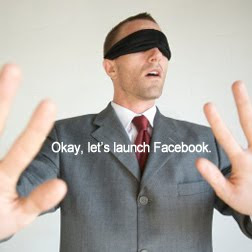
As of a few days ago, Twitter had every right to boast about its 175 million registered users, up from 145 million in early September and 105 million in April. According to Ronny Kerr, Twitter could be seeing as many as 15 million new members each and every month (minus 1 million for people with multiple accounts).
What is interesting about the Kerr post is that he points out that Twitter has seen three major growth spurts in the last couple years and each can be directly assigned to individually significant site developments. What does he claim they are?
The first was in mid-2009, a direct result of widespread media coverage of the site because of Ashton Kutcher. The next surge was in its smart phone offerings, with the launch of official iPhone, Android, and BlackBerry apps, that new registrations would flow like a flood again. And the newest surge, he says, has to do with site design.
I don't think so. The new two-column platform detracts from the user experience, squishing the conversation to one side. It seems more likely the influx of new people is related to the adoption of companies, organizations, and promotion by media.
The reason could be that the entire interface is flawed, something that never occurred to me until viewing Twitter on Flipboard.
How Flipboard, despite some shortcomings, is intuitive.
Legal questions aside, while Flipboard is not suited to dialogue between people (beyond a one comment quip), it does help sort the valuable content from the chaff because it ports in the first few graphs of any link. And, after experimenting with it for a few days, it saves me considerable time and adds value for two reasons.
• Flipboard allows me to immediately see what is behind any link, beyond the 140-character pitch.
• Flipboard helps me find valuable content without relying on other factors like trust and frequency.
In other words, it levels the playing field for everyone I have weaker relationships with while vetting the content being shared by people I have stronger relationships with. And, it does this effectively enough that unless Flipboard disappears, there is no better way to consume content (noting that as I already mentioned, you cannot engage in a two-way dialogue).
The concept was originally developed as an alternative to the various applications that some publications are putting out, but some of the real value comes from social network streams like Facebook and Twitter. Interestingly enough, the Facebook experience on Flipboard is neutral because Facebook never adopted the truncated communication model.
Sure, it would be even better if you could import one blog or feed or web address as opposed to a Twitter stream, but Flipboard works well enough for now. Likewise, if little chat bubbles could accompany the one-time comment option (much like Echo Phone allows), it would change from a content delivery option to a dialogue option.
But more importantly, and the point of this post, it really demonstrates the inherent weakness of Twitter's communication model. As an interface, I've become more fond of Fried Eggs and Facebook for this reason. Both encourage shorter communication without the lockdown on those occasions when you want a longer dialogue.
Don't get me wrong. I still value Twitter because of my connections there. Or, perhaps, I ought to say I value my connections so much, I'm willing to put up with Twitter. However, long term, I wonder how Twitter will fare unless it can develop interfaces that break away from its original, ever more confining quip of 140 characters or less. How about you?




















